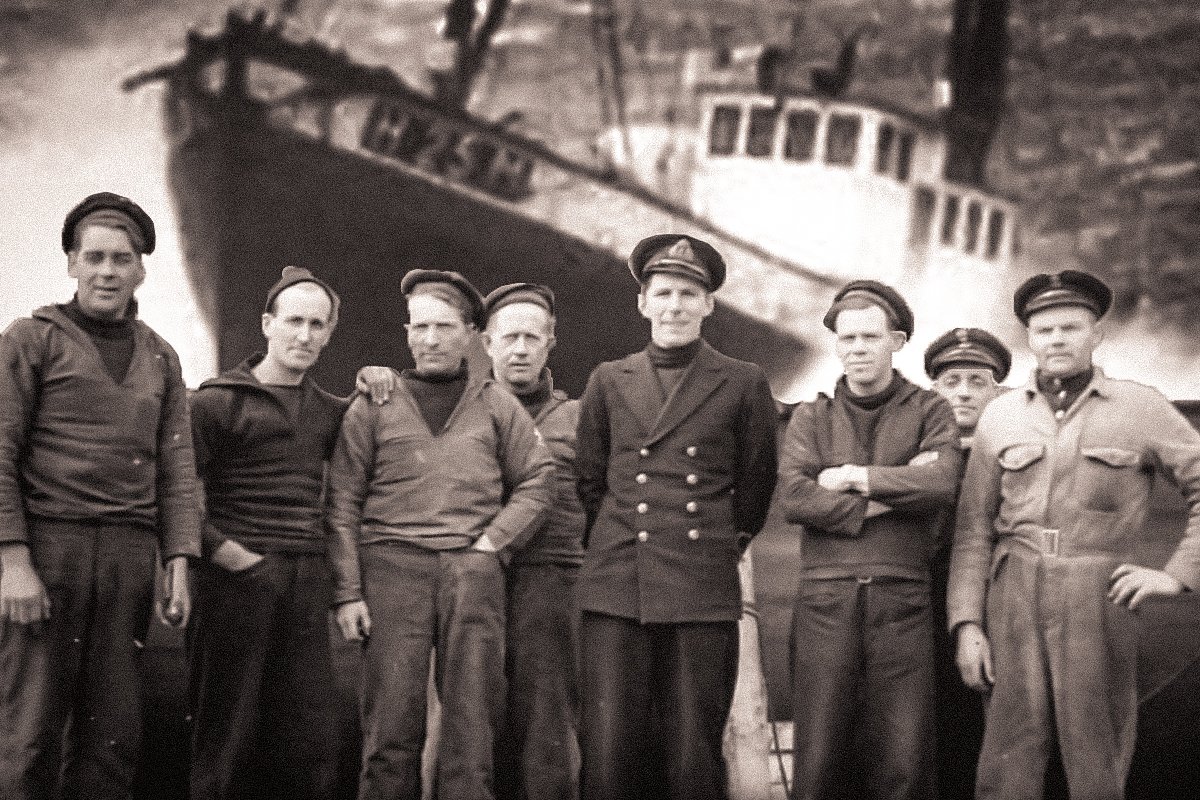
The Shetland Bus
In the early weeks of April 1940, the first combat air assault in history saw German paratroopers, or Fallschirmjägers, leap from Junkers Ju-52s onto Aalborg Airport in Denmark and the Sola Air Station in Norway. Nazi Germany launched Operation Weserübung, the first major invasion to strike from the air, land, and sea. The tactic was so effective that Norway surrendered within two months. Their leadership, along with leaders of other European nations, was forced into exile in Great Britain.
Occupation of Norway was strategic for the Nazis because it would allow them to establish naval ports and air bases to engage the Allies across Europe. Cut off from the rest of the world, Norwegian civilians were in need of salvation. A miracle came in the form of a clandestine mission headquartered hundreds of miles away using a motley crew of Norwegian fisherman with guidance from officers of Britain’s Special Operations Executive (SOE).
Volunteer fisherman from the Shetland Islands — a large, subarctic archipelago on the northernmost part of the British Isles — traveled an arduous path similar to what their 9th-century Scandinavian viking ancestors explored. The boats from Shetland traveled at night and without lights so as not to bring attention from the Germans, crossing the treacherous waters of the North Sea, which are considered some of the most perilous, storm-stricken oceans in the world. Add a war into the mix, with increased anxiety from the German Air Force’s elite Luftwaffe strafing above and the Nazi secret police inspecting the cargo, and the stakes were even higher.
This operation became known as the Shetland Bus and acted as a lifeline for Norwegians escaping Nazi oppression and a highway for British saboteurs to help train, equip, and conduct irregular warfare operations with the Norwegian commandos.
A Motley Crew
Major L.H. Mitchell, a thin British army officer, arrived on the Shetland Islands in December 1940. He was sent by the Secret Intelligence Service (SIS) and SOE. His first task required the setup of a headquarters at Flemington, a two-story farmhouse on a tree plantation developed into a rendezvous point for SOE officers to brief mission plans. Flemington’s garden provided a test range for operators to use their equipment and enhance wireless communications, so they would know how to confront a malfunction when the equipment was used in actual operations.
Flemington housed a separate staging area for fugitives “wanted” by the Germans — refugees who had just arrived from one of the long and exhaustive expeditions across the North Sea and the crew who were desperate for a fresh meal and a shower. The operational base at Lunna on the east coast was later moved to Scalloway, where the boats were repaired, until the end of the war.
The early plans for the Shetland Bus put the operation under British Command. The Brits lost resources through aircraft and naval vessels due to the losses at Dunkirk but had the logistics to pull off the cloak-and-dagger nature of the job. At sea, however, the Norwegians led the charge.
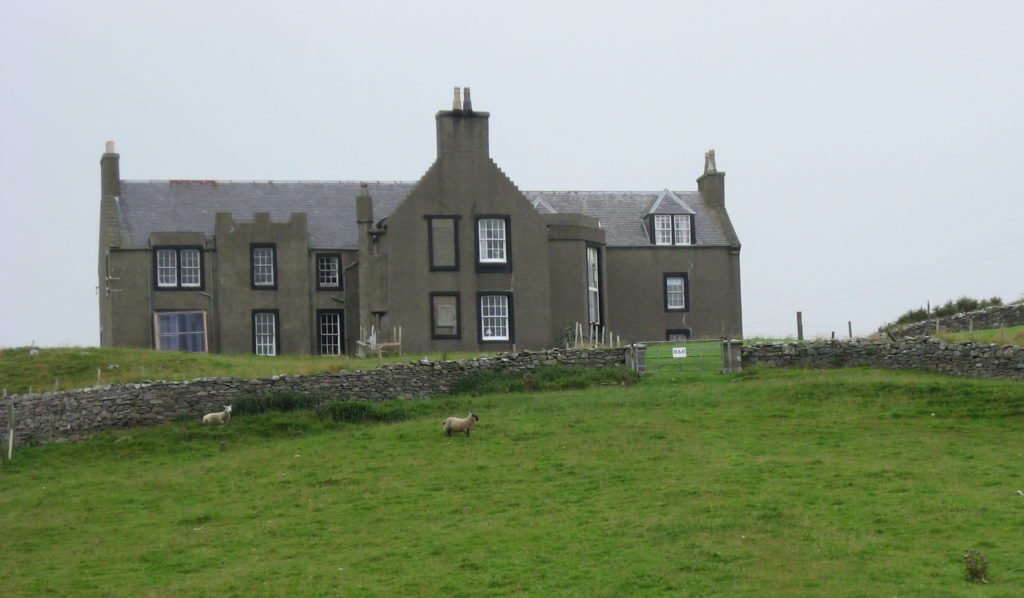
No British-made boat could successfully sneak into the harbors without raising an eyebrow. If a British sailor fluent in Norwegian were to be questioned, he would certainly garner an accent. The value in using Norwegian sailors was that they countered avoidable risks; local knowledge to distinguish manmade flaws in the landscape — a sentry, perhaps, or a new fixture designed to overwatch the coast — was a priceless asset. Plus, each knew the route from memory and had unmatched seamanship fishing off the shores of Greenland and Iceland during the summer.
The minute details before each trip were scrutinized. Passes had to be approved at each port of call. Restrictions were made to obstruct suspicious ships from reaching Norway from Shetland. Haphazard “forbidden areas” were declared at random; lighthouses were secured, which prevented ships at sea using them for aid, and fishing was restricted to a 50-mile zone. The odds were certainly stacked in favor of the Germans, and their window of operation ceased during the summer when the ocean calmed and patrols increased. This gave them a breath to refit and keep secret the destination from the Germans who hunted them.
The smaller, more agile 50- to 70-foot fishing boats provided a fitting disguise. David Howarth, another British SOE officer who joined Mitchell in June 1941 and authored the book “The Shetland Bus: A WWII Epic of Escape, Survival, and Adventure,” described their design.
The value in using Norwegian sailors was that they countered avoidable risks; local knowledge to distinguish manmade flaws in the landscape — a sentry, perhaps, or a new fixture designed to overwatch the coast — was a priceless asset.
“They had bunks for six or eight men in the forecastle, and two in the small cabin aft,” Howarth wrote. “The hold amidships could carry eight or ten tons of small arms and explosives, and the wheelhouse, which was built on top of the engine casing, usually had a small chart-room opening off it, and a galley behind.”
Early on, they were completely defenseless, using camouflage as their armor in their unassisted excursions. Over time, steel plates and concrete were inserted between the wall of the ship’s stern and bow. Howarth’s contribution showed the ingenuity of SOE officers. “My own most successful gun-mounting was one made for twin stripped-Lewis machine guns,” he wrote. “I mounted these guns on a telescopic stand inside an ordinary forty-gallon diesel oil drum. The drum was bolted to the deck, and lashed, for appearance’s sake, to the bulwark, and its top was sawn off and refitted as a removable lid.” Oil drums were as common as fishing nets on the vessel, the perfect spot for serious firepower.
The idea of forming an organized military unit never mustered, as an undisciplined ragtag gang of fishermen and seafarers taking orders from the authority of another nationality were thought to be disingenuous at best. Instead, they elected their own skippers to captain the boat.
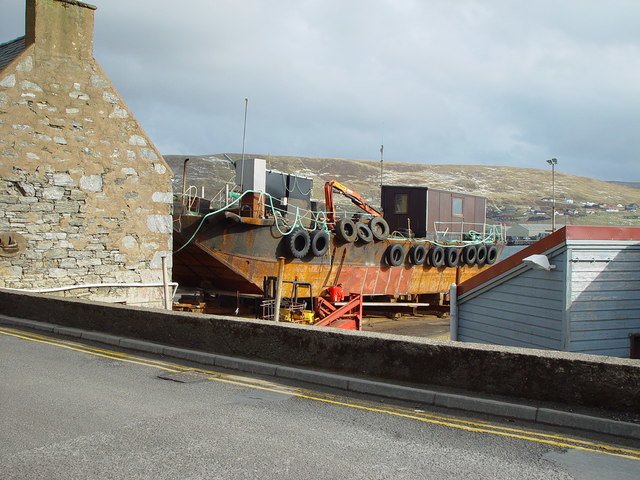
The Legend of Leif Larsen
Leif Larsen received a unanimous vote from his ship’s crew to be the captain. “He was a stockily built man in his thirties, with china-blue eyes, a broken nose, and a wide humorous mouth; and he had so quiet and modest a manner that it might have taken us a long time to find out his latent powers,” Howarth wrote.
Larsen’s grit and courage to confront typhoons, shipwrecks, aircraft that had them zeroed, and dubious questions from German customs agents never wavered. He treated the most lowly rank to the Crown Prince of Norway with equal merit, and he hid his fear with a ferocious command of his vessel like an around-the-world commodore.
A mission on the horizon in 1942 to target the German battleship Tirpitz was given to the only skipper bold enough to carry it out. The Tirpitz looked like a skyscraper on its side, outfitted with the biggest guns the German Navy had ever built. To say it was enormous would be an understatement. Strategically placed at the Trondheim fjord, British destroyers and aircraft carriers were occupied in its surveillance but were desperately needed elsewhere.
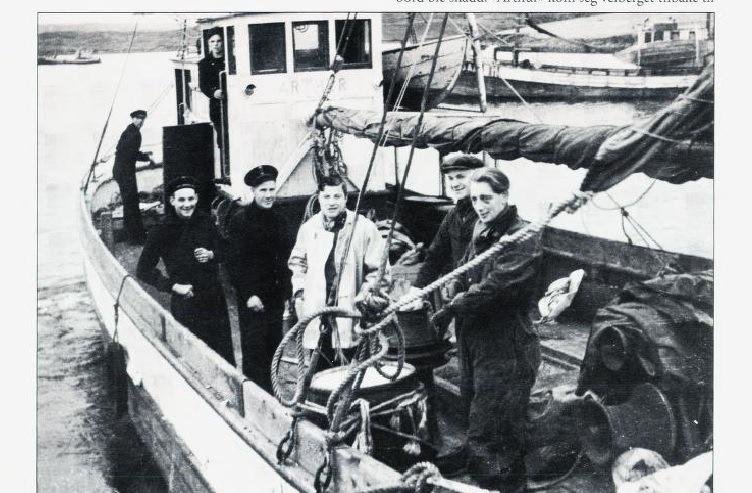
The autumn plan headed by Submarine Service Commander Slaydon RN called for two Chariots, or two-man torpedoes, to be towed along the Arthur, Larsen’s famed fishing boat. If asked, Larsen gave false names for himself, for his crew, and for the Arthur, which assumed the guise of the Norwegian Fishing Boat Register. After the last checks were inspected to convince any suspicious onlookers that their boat was indeed authentic and three-layer contingencies were adopted for the British commandos, they launched into the hornet nest of the German Navy.
In theory, once within range of the Tirpitz, the Chariots would travel the rest of the way underwater, the operators would latch a mine on the ship’s hull, and the Chariots would make a hasty escape. In reality, they arrived undetected five miles from the Tirpitz, but the Chariots towed along had been lost due to the rough sea conditions. The Arthur then had to be sunk to erase the evidence and their footprint. The men swam ashore, battled frostbitten feet, and had a fight with a German policeman. One Englishman was wounded by gunfire; the Germans captured and later executed him. The mission was a failure, but the unorthodox plan awarded Larsen the Conspicuous Gallantry Medal.
In a later interview, Larsen nonchalantly spoke of the mission: “We lost all of our small sub-mines we were towing with us … we had to go overland to Sweden and, well, we had some hardships and met some Germans and had a little fight.”
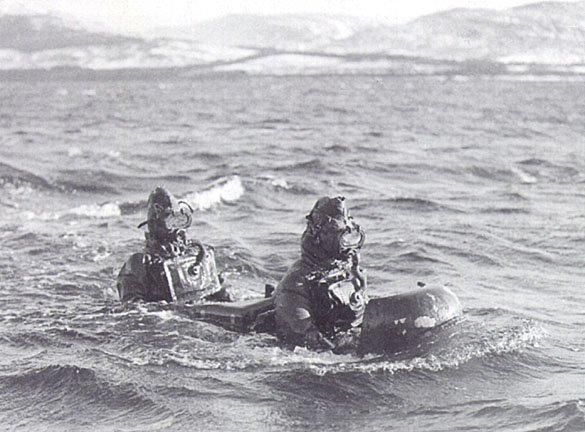
In total, Larsen made 52 trips across the North Sea, a remarkable feat knowing some tours were hundreds of miles in distance and lasted for as long as three weeks. By war’s end, Larsen would be awarded every Norwegian medal for bravery, including the War Cross with two swords (equivalent to two Medal of Honor awards), and every British award for valor except the Victoria Cross.
Following the war, his legend continued as he pioneered aluminum lifeboats and tested their mettle himself across an 800-mile voyage with a mixed batch of amateur seafarers and seasoned veterans. One of his crew quipped they were “hanging on for dear life.” Larsen, however, described it as “a nice little holiday” and “a cakewalk.”
Norwegian Independent Company No. 1
Captain Martin Linge formed “Kompani Linge,” or Norwegian Independent Company No. 1 (NOR.I.C.1), an SOE-supported resistance group to conduct irregular warfare and sabotage missions. These were the agents hidden in compartments aboard Larsen’s fishing boats who would sometimes sneak ashore — sometimes alone, sometimes with a small team — carrying rucksacks filled with supplies. Later, after a tragedy that cost the lives of 44 men, the fishing boats were replaced with three American sub-chasers.
They parachuted from an RAF plane, skied snowy hills, crossed icy rivers, detonated explosives to erase the entire inventory, and journeyed 400 kilometers to Sweden — completely undetected.
Linge, at 47 years old, would lead a team of 33 Norwegian raiders as part of a nearly 600-strong British commando force into the harbor of Reine, a small fishing village north of the Arctic Circle in the Lofoten Islands, days after Christmas. In the town of Måløy, seasoned mountain rangers on leave were surprised at the daring raid. Second in command to Linge was Jack Churchill, a British officer nicknamed “Mad Jack” by his men. He hoisted a bagpipe to his lips and played the popular Scottish tune “The March of Cameron Men” while they stormed the beach to the German stronghold. Then, with sword in hand and pipe in tow, he fought the German resistance with a quiver of arrows and his trusty bow.
The commandos and raiders suffered the loss of Linge and 52 others as a part of the five Allied nation coalition. The mission, however, forced Adolf Hitler to respond with the construction of “Festung Norwegen,” a defensive fortification of 10 German divisions. In addition, four fishing oil factories were destroyed, an estimated 120 Nazis died, and eight warships were sunk.
Gunnar Sønsteby, or Agent No. 24 to his compatriots, led the Oslo Gang (NOR.I.C.1 headquartered in Oslo), a platoon-sized detachment of saboteurs. He terrorized the Germans by sabotaging a labor office, destroying as many as 40 aircraft, forcing a railway locomotive off the tracks, setting fire to a gun manufacturing plant, and dodging assassins by using 30 to 40 different identities throughout the war. Sønsteby joined the resistance, citing, “Oh, the humiliation of seeing those green-uniformed creatures tramping our streets.”
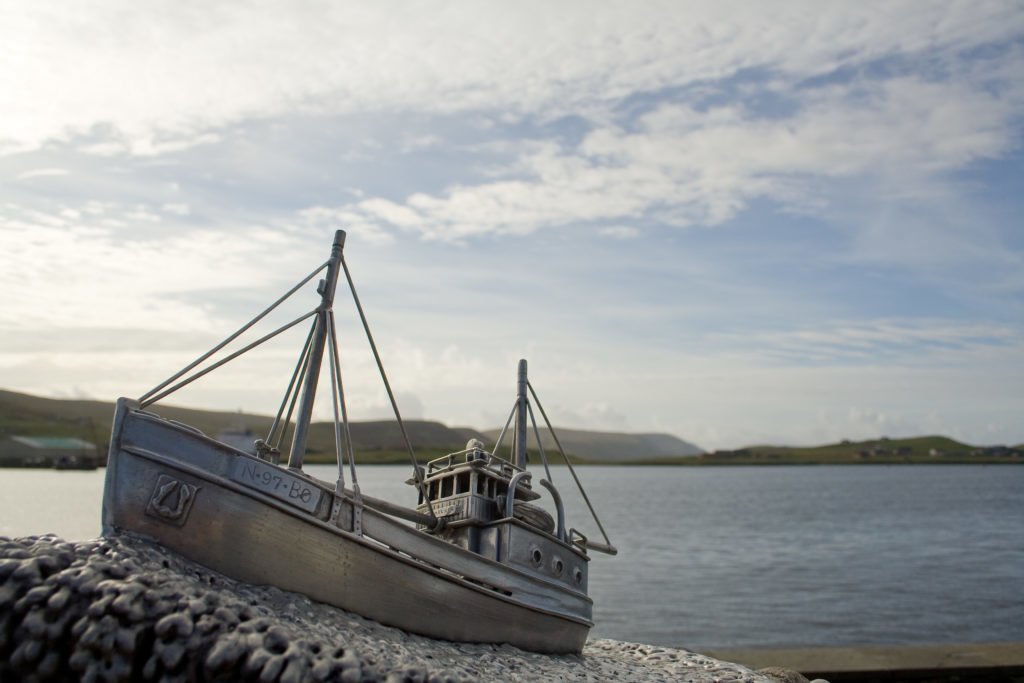
Sønsteby and Max “Man of War” Manus, a legendary resistance leader in his own right, appeared on “Wanted” posters calling for their arrest scattered across Norway. Manus even managed to escape torture by using a rope to rappel from a second-story window. The Oslo Gang printed black propaganda newspapers to further their influence. Sønsteby’s talent as a forger allowed him to sign “official” documents as Karl Marthinsun, a Gestapo member and paramilitary force leader.
Kompani Linge’s most praised contribution to World War II was certainly Operation Gunnerside, the destruction of the heavy water plant in Vemork. The Nazis had plans to develop a nuclear bomb, and Norwegian commandos were sent to destroy the plant. They parachuted from an RAF plane, skied snowy hills, crossed icy rivers, detonated explosives to erase the entire inventory, and journeyed 400 kilometers to Sweden — completely undetected.
The heroism of the Shetland Bus operation and the subsequent commando raids provide a fine example of how a small resistance can counter a large military juggernaut using guerrilla warfare tactics and a little bit of creativity. The Shetland Bus carried out hundreds of missions, transported over 400 tons of weaponry, and turned ordinary citizens into giants: the heroes of Norway during World War II.

Matt Fratus is a history staff writer for Coffee or Die. He prides himself on uncovering the most fascinating tales of history by sharing them through any means of engaging storytelling. He writes for his micro-blog @LateNightHistory on Instagram, where he shares the story behind the image. He is also the host of the Late Night History podcast. When not writing about history, Matt enjoys volunteering for One More Wave and rooting for Boston sports teams.
BRCC and Bad Moon Print Press team up for an exclusive, limited-edition T-shirt design!
BRCC partners with Team Room Design for an exclusive T-shirt release!
Thirty Seconds Out has partnered with BRCC for an exclusive shirt design invoking the God of Winter.
Lucas O'Hara of Grizzly Forge has teamed up with BRCC for a badass, exclusive Shirt Club T-shirt design featuring his most popular knife and tiomahawk.
Coffee or Die sits down with one of the graphic designers behind Black Rifle Coffee's signature look and vibe.
Biden will award the Medal of Honor to a Vietnam War Army helicopter pilot who risked his life to save a reconnaissance team from almost certain death.
Ever wonder how much Jack Mandaville would f*ck sh*t up if he went back in time? The American Revolution didn't even see him coming.
A nearly 200-year-old West Point time capsule that at first appeared to yield little more than dust contains hidden treasure, the US Military Academy said.












